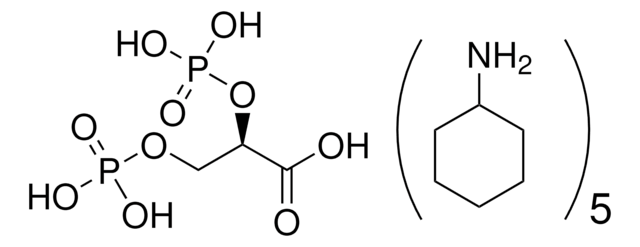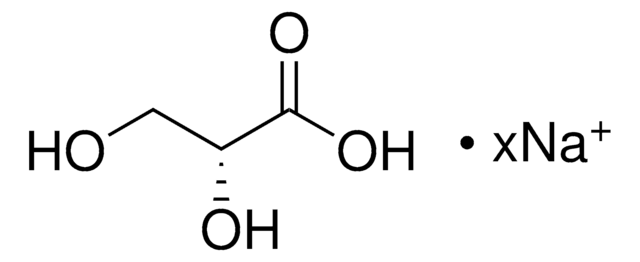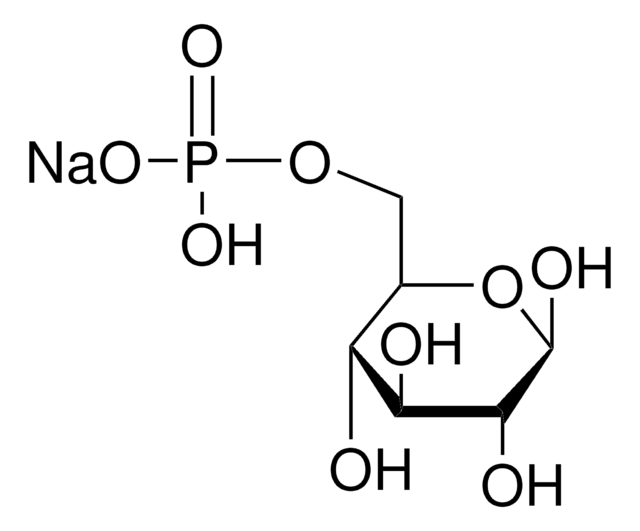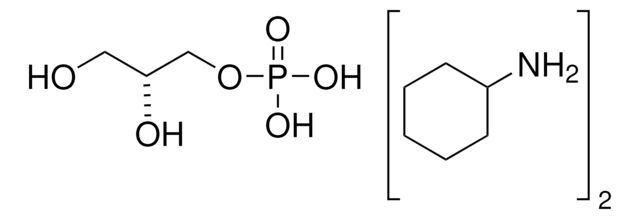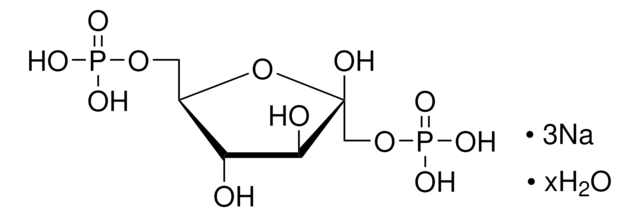D5764
2,3-Diphospho-D-glyceric acid pentasodium salt
glycolysis metabolite
Sinónimos:
2,3-DPG, D-Glycerate 2,3-diphosphate sodium salt
About This Item
Productos recomendados
biological source
synthetic
Quality Level
form
powder
impurities
3-phosphoglyceric acid, essentially free
color
white to off-white
solubility
water: 100 mg/mL, clear, colorless to faintly yellow
cation traces
Na: 24.5-32.5% (anhydrous)
storage temp.
−20°C
SMILES string
[Na].OC(=O)[C@@H](COP(O)(O)=O)OP(O)(O)=O
InChI
1S/C3H8O10P2.Na.H/c4-3(5)2(13-15(9,10)11)1-12-14(6,7)8;;/h2H,1H2,(H,4,5)(H2,6,7,8)(H2,9,10,11);;/t2-;;/m1../s1
InChI key
JJEMSNINYKJOBZ-YBBRRFGFSA-N
Application
Biochem/physiol Actions
Other Notes
Storage Class
11 - Combustible Solids
wgk_germany
WGK 3
flash_point_f
Not applicable
flash_point_c
Not applicable
ppe
Eyeshields, Gloves, type N95 (US)
Elija entre una de las versiones más recientes:
¿Ya tiene este producto?
Encuentre la documentación para los productos que ha comprado recientemente en la Biblioteca de documentos.
Los clientes también vieron
Nuestro equipo de científicos tiene experiencia en todas las áreas de investigación: Ciencias de la vida, Ciencia de los materiales, Síntesis química, Cromatografía, Analítica y muchas otras.
Póngase en contacto con el Servicio técnico